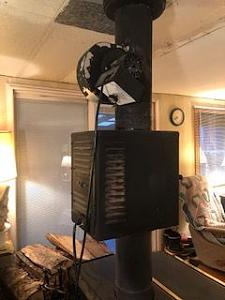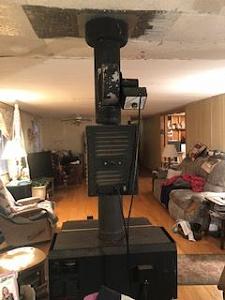Does anyone know of a presently available, commercial source for a 6 inch catalytic combustor that can be installed in the chimney of an airtight wood stove?
We presently heat with an airtight wood stove with a heat exchanger and a draft fan installed in the chimney.
This stove is the primary heat source for our 1800 sq/ft home and we only use the backup oil furnace when the Minnesota winter temperature drops below -10 degrees.
The heat exchanger is controlled by a thermostat and the duct fan is controlled by a timer.
These two units have worked quite well for increasing the efficiency of the stove but the heat exchanger does tend to increase the soot buildup in the flue above the unit.
I am thinking that a catalytic combustor replacing the flue immediately above the stove top would raise the flu temperature thus reducing the soot buildup and also increasing the heat output of the heat exchanger.
I remember that a few years ago, there were quite a few of the retrofit units available for sale but it seems that now the new wood stoves that already have the combustion unit installed have almost completely eliminated the supply of retrofits.
I found one unit available that was exactly what I had in mind, but it was for an 8 inch pipe and adding the reducing adapters to my existing chimney would make the unit too long to install.
The catalyst in this unit can be rotated 90 degrees to either enable or disable the ignition of the catalyst.
Any thoughts or recommendations would be appreciated.




|
   
   
|


|







 Reply With Quote
Reply With Quote








